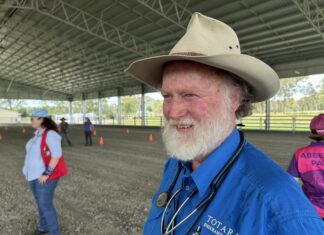My opposition to the new Noosa Springs Hotel began largely due to my concerns regarding its non-compliance with zoning and other planning issues. It was amazing to see the groundswell of public opposition to the building and I began to look deeper. This planning application affected people in many different ways – some real and others as perceived effects. Eventually, the building was approved on the basis of a deal done to preserve a relic not on the basis of community impact. The decision was at its core an expression of pragmatism and it was decided by the slimmest of majorities possible. The argument posed in support of the approval was that by cutting off a wing of the proposed hotel a relic could be retained. The relic is a stand of trees. Significant in themselves, in their contribution to our biosphere and as was argued significant in their story. In the end, it was a simple matter of horse trading.
What we have now is an incongruous approval – a truncated building burdened by consent conditions. The original concept is important because one day this building may also be a relic and carry a story. That story could be to do with the way planning law trussed and hobbled buildings to produce strange hybrids of questionable aesthetics. The concept of this hotel is of a large pool surrounded by luxury rooms with palm trees all around – unaware of context or impact. It was a flat concept drawn on flat paper, but it was a concept. Now it has had one of its enfolding arms removed – a very useful and efficient limb. May I suggest that the reason the limb needed removal was because the concept was wrong. And that is the problem with concepts. They are broad by nature and are often not resolved at a detail level.
We should also look at the planning process and the way in which it attempts to solve design issues by placing conditions on a development. This overlays a cost of compliance, of oversight, of enforcement – all because the design did not solve the problem. Examples in respect of this hotel are the consent conditions required to reduce the potential odour impacts from the neighbouring sewage treatment plant. These only exist because of the siting of the hotel. So instead of solving the problem by design we have condition applied to solve a problem created by the design.
So what I know of this approval is that a relic was held to be of such significance that it outgunned all other issues. That relic was supported by a story of indigenous culture. As a result of this approval, there will be new stories told of holidays, golfing trips and cocktails by the fire pit. There will be stories never told of tennis wins and groups of friends suffering through pilates lessons – no stories about their lumps, pains and grandkids. No-one can value the stories. But who values the relic? In this case, it appears, it was decided by one councillor, who valued the relic, told its story and essentially did the deal to approve the building. I am not suggesting that this is an inappropriate planning process. After all, we need to hold and apply values – and the decision in this case was a value judgement.
The retention of significant landscape is important. The relic is significant. And the visiting golfers will have the benefit of a beautiful environment. I am not so sure the story attached to the trees will do much to advance our understanding of either the biosphere or indigenous culture, but it is a good story.
Early on in this application process a councillor said to me – “John, it will be decided on planning grounds”. He was wrong. It was decided on value judgements. Councillors weighed what was before them differently. They acted on their values and this is a very comforting thing. Values are great – you can choose them, change them and vote for them.
We have a result and we will have the consequences of that result. I think it is the wrong result but we saved some trees. The fact that the council vote approved the hotel by the slimmest possible margin indicates that some councillors agree with not only me but every individual and organisation who expressed opposition to this scheme.







